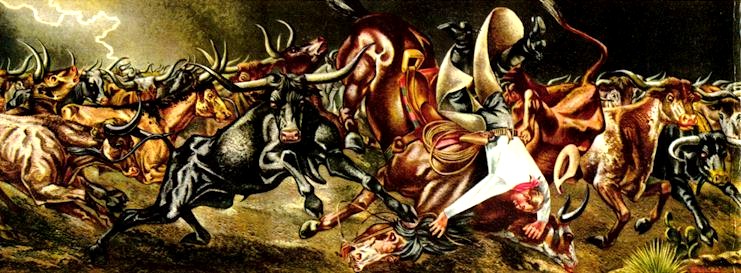
The Smithsonian Museum of American Art did a program today on the mural art of the New Deal, especially emphasizing the work of Texas Artist Tom Lea. These murals were commissioned by the government during the Great Depression. They were meant to give artists useful work and celebrate America in all its regional diversity. Most were in public buildings such as post offices, which is why they are currently in some peril. Structures from the 1930s are often reaching the end of their useful lives. They are being torn down or converted to other uses.
What I found particularly interesting was the relationships between artists, officials and the people. This art was never meant as a personal expression of an individual artist. They were designed by committee; the community made decisions about themes and sometimes about details. This is what makes them more interesting.
They are not about the artists themselves and their particular vision. They are bigger than the artist. They are indeed about self-expression, but not merely self. Artists were paid in installments. If they produced something their patrons didn’t want, they might not be paid. Maybe because it is not the work of an individual artist, the murals are full of allegory and symbolism. They celebrate the town or region. Since they were meant to be in public places where people would see them every day, they had to make sense to people every day. The government paid the artists, but the work was truly market driven.

The focus was a case study of the Texas artist Tom Lea and particularly a mural he did called stampede done for the post office in Odessa, Texas. Originally, the mural was high on a wall over the tellers. When people came in, they looked up at it and probably had time to contemplate it while waiting in line. It was moved when a new post office was built nearby, but it was placed in an out-of-the-way place and at eye level. Context is important. Is it really the same work of art in its new location?
